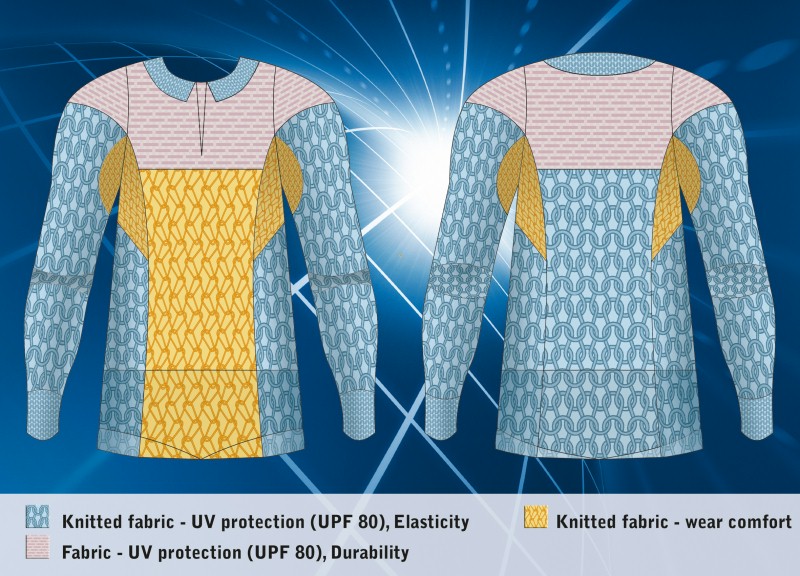
SGS helps manufacturers access UV protective clothing markets
About two and a half million people in Germany regularly work for eight hours or more in the sun, the Hohenstein Institute reports. Their risk of developing skin cancer is twice as high as that of those employees who do not work outdoors. Only a very few of them wear special UV-protective clothing, as recommended by the trade unions and the German Social Accident Insurance Association (DGUV). However, the pressure on employers to require such clothing to be worn and make it available, may now increase considerably, the Institute believes. The Institute has developed combinations of materials in order to improve the functionality of protective fabrics, taking wearer’s comfort into account.

19th March 2014
Innovation in Textiles
|
Boennigheim
About two and a half million people in Germany regularly work for eight hours or more in the sun, the Hohenstein Institute reports. Their risk of developing skin cancer is twice as high as that of those employees who do not work outdoors.
Only a very few of them wear special UV-protective clothing, as recommended by the trade unions and the German Social Accident Insurance Association (DGUV). However, the pressure on employers to require such clothing to be worn and make it available, may now increase considerably, the Institute believes.
The Institute has developed combinations of materials in order to improve the functionality of protective fabrics, taking wearer’s comfort into account.
In order to achieve a balance between a high UV protection factor, wearing comfort and durability, especially for workwear, in recent years special fibres with built-in UV protection have been developed.
They contain titanium dioxide, which reflects and/or absorbs harmful UV-radiation so that it does not reach the skin. At the same time, they are lightweight and comfortable to wear. Furthermore, at the Hohenstein Institute, as part of a research project, combinations of materials have been developed that improve functionality even more.

The initial prototypes offer especially high UV protection (UPF 80) on exposed areas like the shoulders and are mechanically very hard wearing. The use of stretchy materials on the back and sleeves not only provides protection from the sun, but also makes the garments comfortable to wear and take on and off. Special textile zones under the armpits and in the stomach area have been optimised to deal with sweat production, making the garments breathable and pleasant to wear.
The UV protection provided by textile materials varies greatly. As well as the colour, it is mainly the material that determines the UPF (Ultraviolet Protection Factor) that indicates the protection factor of the textiles in the same way as the SPF (Sun Protection Factor) on sun creams.
Lightweight, brightly coloured clothing in cotton is comfortable to wear, but only has a UPF of about 2 – 10, when measured against the international UV Standard 801. Thick materials, darker colours and wearing several layers on top of each other significantly increase the protective effect of clothing.
According to German Cancer Aid, about 70,000 people a year fall ill with white skin cancer, also known as squamous epithelial carcinoma. This is a malignant skin tumour affecting the upper layers of the skin (epithelium).

Even more prevalent are actinic keratoses, scaly patches of skin which can, according to data from the European Skin Cancer Foundation (ESCF), develop into malignant squamous epithelial carcinomas in about 10% of cases.
Experts agree that textiles offering a high degree of UV protection provide the best protection for people who have to be outdoors for long periods and regularly for their work. Cosmetic sun protection, on the other hand, is mainly suitable for spending limited periods of time in the sun.

Business intelligence for the fibre, textiles and apparel industries: technologies, innovations, markets, investments, trade policy, sourcing, strategy...
Find out more